Sunday E-dition: The Only Rescue of Its Kind in Napa Valley
By Tim Carl
NAPA VALLEY, Calif. — Napa Wildlife Rescue is not a sanctuary, zoo or pet adoption center. It is a frontline emergency facility — a trained network of volunteers and professionals who respond when Napa County’s wild animals are injured, orphaned or displaced. This nonprofit is the only organization in the county licensed by both the California Department of Fish and Wildlife and the U.S. Fish and Wildlife Service to provide full-scale wildlife rehabilitation.
And in 2025 the need has spiked: More than 1,300 animals have already come through its doors — nearly 40% more than during the same period last year.
“It has been a really busy year for us,” said Carol Poole, the center’s president. “Just yesterday we had more than 15 new arrivals, some with very serious injuries. Every day is different, but I’m just grateful we’re able to make space for these wild animals.”
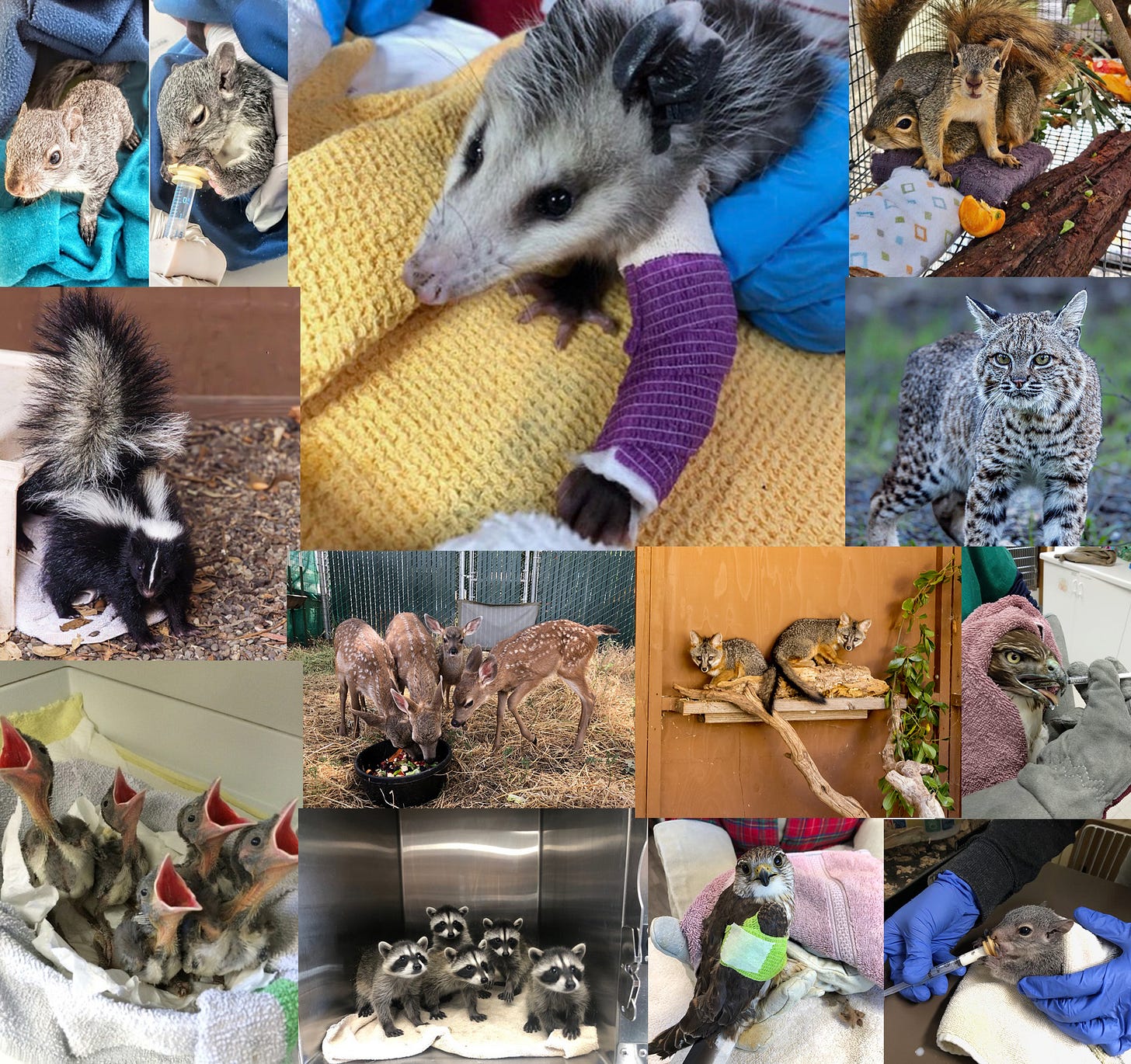
On any given day, dozens of patients — foxes, owls, bats, raccoons, songbirds, hawks and more — are in recovery. Each one follows a care protocol designed for its species, with the goal of returning it to the wild. Founded in the early 1990s, Napa Wildlife Rescue operates entirely on donations, grants and community support. There is rare public funding and no government mandate — just a mission.
“There’s no shortage of compassion and energy here.” — Michelle Clancy
That mission is simple but demanding: Stabilize, treat, rehabilitate, and release wild animals without taming or imprinting them. No petting. No naming. No attention-seeking. The team works quietly, methodically, behind the scenes — giving each animal a real shot at survival.
From Intake to Care
“Most of our animals come in just like this,” said Linnaea Furlong, director of animal care and operations, gesturing toward a towel-lined cardboard box resting on the intake table. “It might be a cardboard box, a paper bag — ideally not someone handing the animal to us directly, but that happens, too. It’s stressful for everyone: the finder, us and especially the animal.”

Each intake begins with a form required by the California Department of Fish and Wildlife. Volunteers record when and where the animal was found, the apparent cause of injury, and any known human or pet contact. That information helps guide both treatment and eventual release.
“We need to know where they came from,” Furlong said. “That way, if they recover, we can return them close to their territory — and it also helps us anticipate what to look for in terms of injuries or stress.”
On this day, a small house sparrow was brought in after being caught by a cat — one of the most common causes of songbird injury.
“Even if the bird looks fine, cat contact is serious,” Furlong said. “There’s bacteria in cat saliva that can be fatal when birds groom and ingest it. So any time there has been contact, we start a course of antibiotics, no matter what.”
Once initial notes are made, the staff conducts a physical exam. If needed, Napa Wildlife Rescue calls in its volunteer veterinarian, Ed Powers, to assist with diagnostics and procedures. A compact X-ray generator stands ready in the corner. Surgeries, mite treatments and wound care are all part of the in-house workflow.
Each patient is triaged — either stabilized on-site, transferred or placed in a quiet enclosure for recovery.
“We’re equipped for a lot, but we’re always balancing what the animal needs with how much stress it can tolerate,” Furlong said.
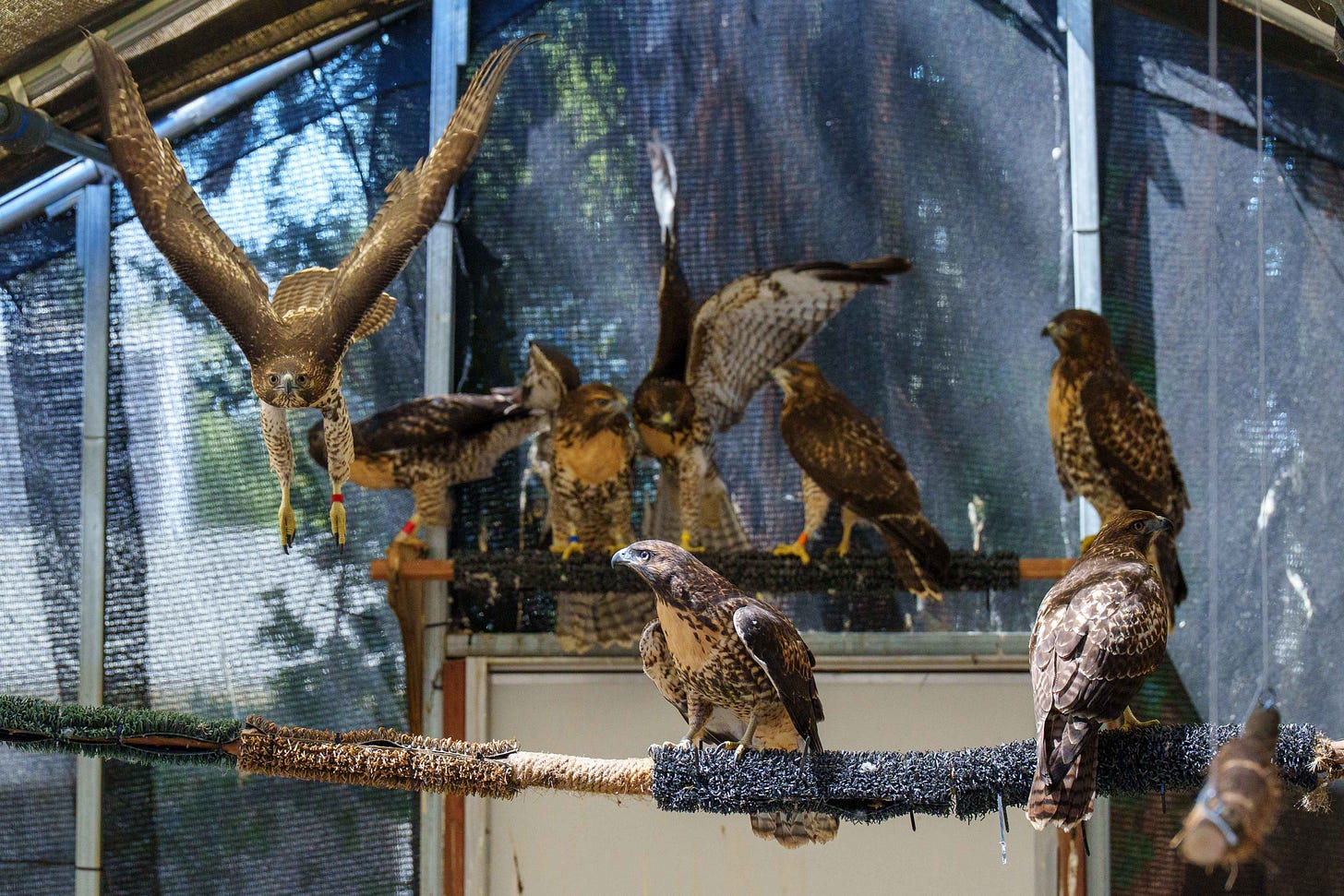
What to Do If You Find Injured Wildlife
Do not handle the animal directly unless absolutely necessary for safety. Use gloves or a towel to gently place it in a cardboard box with air holes.
Keep the animal warm, quiet and dark. Place the box in a calm area away from pets, people and noise.
Do not feed or give water. The wrong food or stress from handling can cause more harm than good.
Call the Napa Wildlife Rescue “hawk line:” 707-224-HAWK (4295). Trained volunteers are available daily to offer guidance.
Watch the animal’s location if requesting a pickup. Injured animals are experts at hiding; keeping visual contact helps rescuers locate them.
Note the exact location where the animal was found. This is crucial for eventual release and for understanding possible causes of injury (e.g., roads, cats, habitat hazards).
Bring the animal in a secure container — a towel-lined cardboard box or paper bag is ideal. Avoid using wire cages or carriers with large gaps.
Fill out the intake form when you arrive. The form is required by the California Department of Fish and Wildlife and helps guide treatment and tracking.
Note: Napa Wildlife Rescue only accepts native wild animals. For domestic pets such as cats or dogs, contact Napa County Animal Services or Jameson Humane.
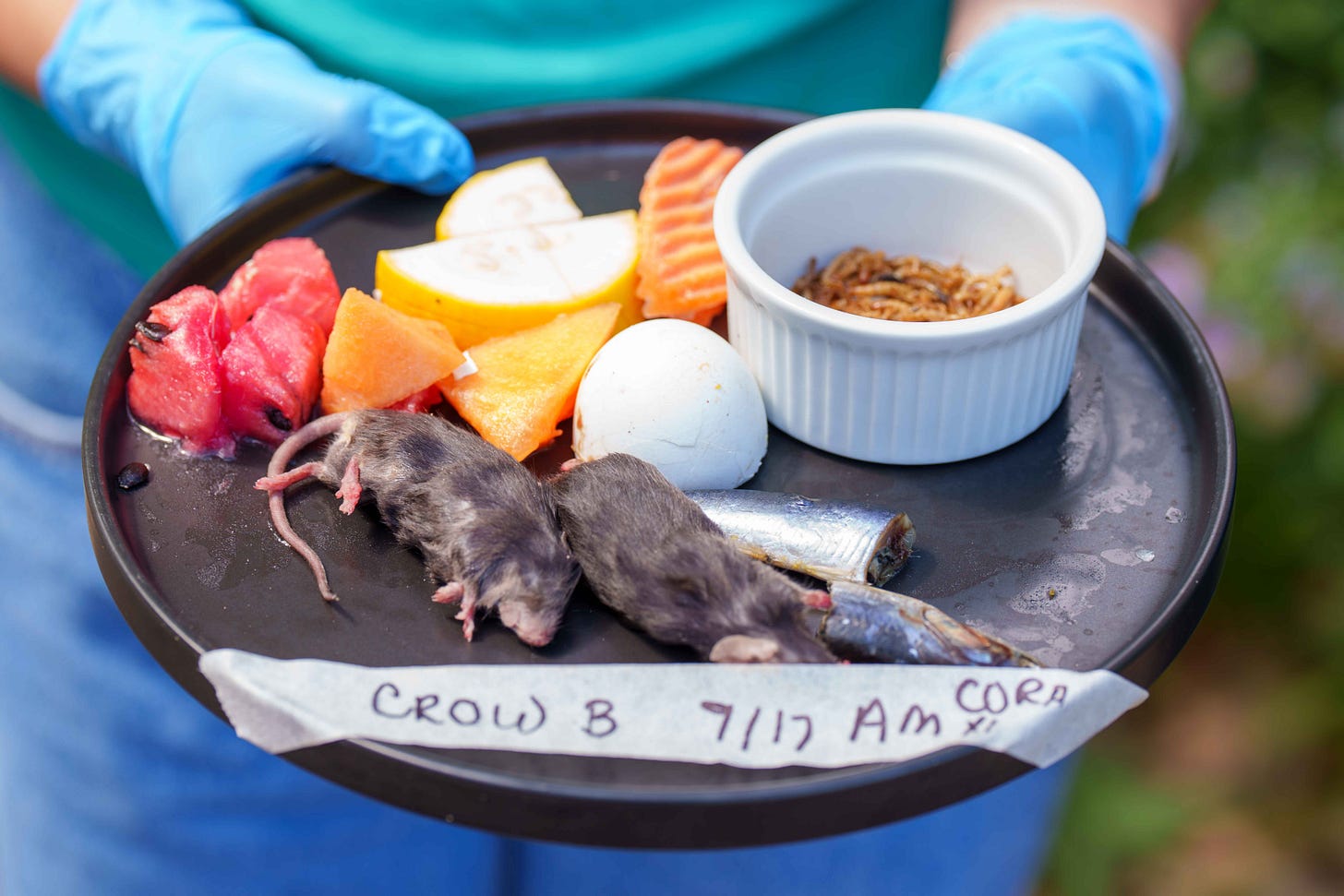
But helping wildlife isn’t just about emergencies. Many injuries can be prevented before they happen.
Support Starts at Home
One of the most powerful things residents can do is rethink their approach to backyard birds.
“Instead of putting out seed, plant natives,” Furlong said. “Oaks are a keystone species — even small saplings support hundreds of insects, which feed birds naturally. It’s the foundation of the food web.”
In Napa Valley, native plants like manzanita, elderberry, toyon, California fuchsia, ceanothus, buckwheat and coyote brush offer seasonal berries, nectar, seeds and shelter — attracting finches, hummingbirds, quail, and more.
And if you do keep feeders? “Clean them regularly,” she said. “And keep cats indoors. Even well-fed cats hunt. It’s instinct — and it adds up fast.”
Porch Drop, Swallow in Hand
A buzz at the front gate signaled another arrival.
Out on the porch, Ahna Jotter stood quietly, cradling a cardboard box while filling out an intake form on a clipboard. She’d come from Judd’s Hill Winery, where she works and where the cliff swallows return each spring to build nests under the eaves.
“I’ve always known about this place,” she said. “It’s a real community asset. Last year we found a chick that had been pushed from the nest, but we found it too late, and it didn’t make it.”
This year she hoped would be different.
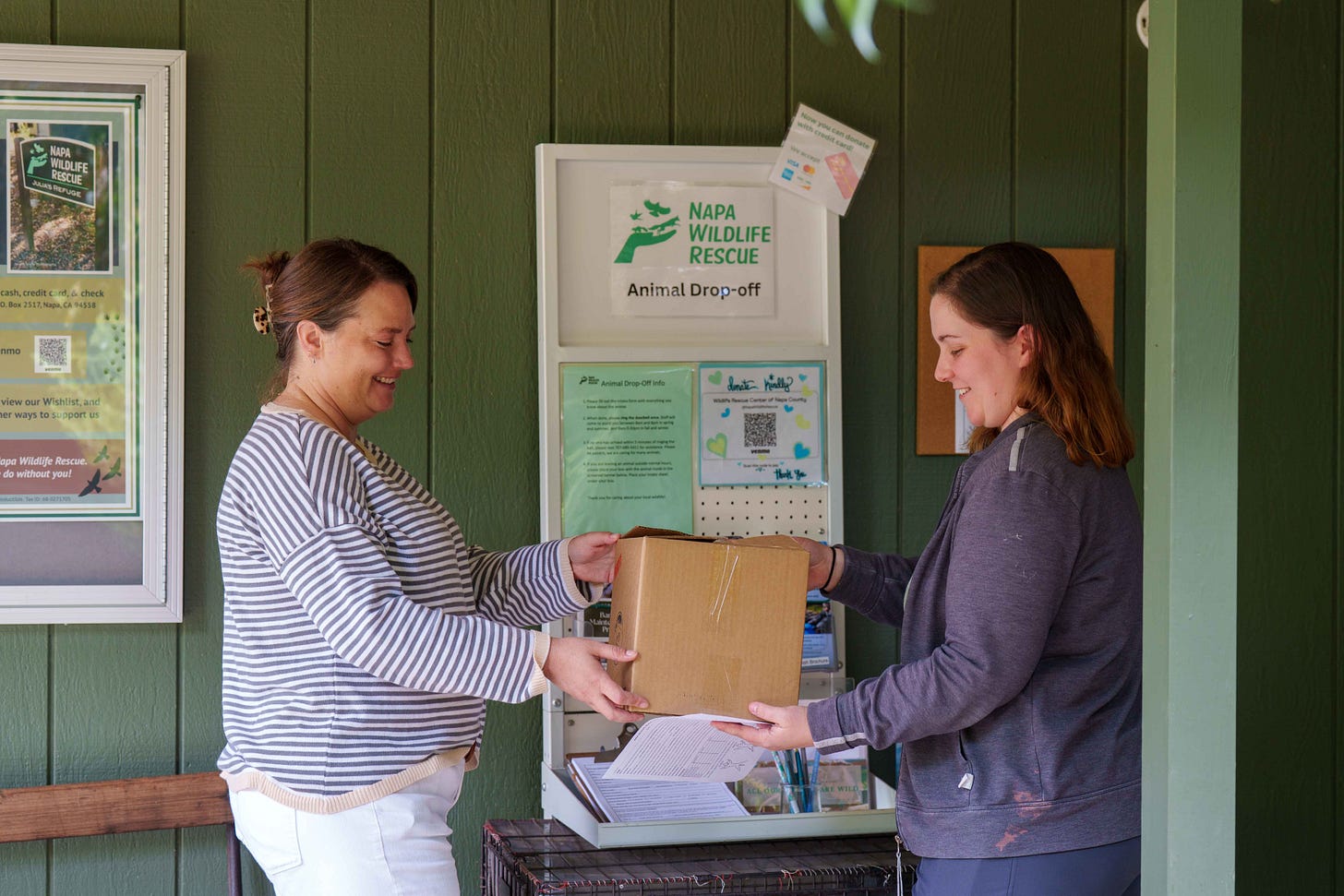
“We found one on the ground today and knew what to do. We scooped it up and brought it straight here.”
Jotter didn’t step past the front porch. Like most visitors, she wasn’t allowed inside the facility without prior authorization. That policy protects the animals and maintains compliance with state and federal wildlife permits.
Once the form was complete, the staff gently retrieved the box and began the formal intake. Behind the scenes, longtime volunteer Janice Taylor was already preparing the next stage of the swallow’s care.
From a Newspaper Ad to Orthopedic Surgery: 26 Years of Care
Inside one of the quieter rooms, Taylor checked on a recovering dove, her movements practiced and precise. Taylor began volunteering at Napa Wildlife Rescue 26 years ago after seeing a small ad in the local newspaper asking for help with songbirds.
“I said, ‘OK, I’ll go help,’” she recalled. “Back then we worked out of a travel trailer on someone’s property. The outdoor birds were in a pop-up tent with wire cages. If one got loose, it was gone.”
For years the group couldn’t take in patients. With no local wildlife rehab license available inside city limits, the team operated as a triage station — stabilizing animals and transporting them to other counties. That changed when the nonprofit secured proper state and federal credentials and moved into its current location.
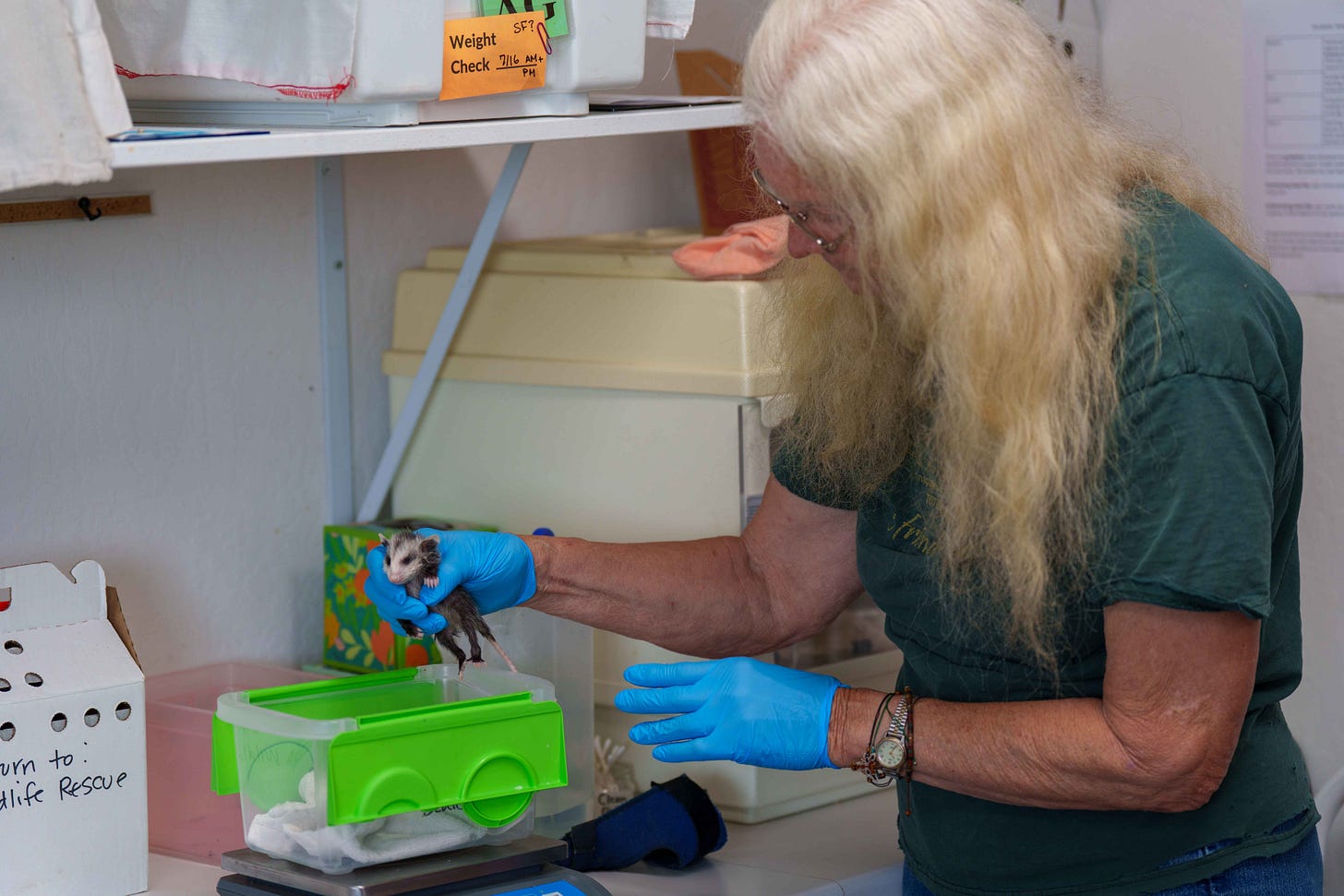
Taylor has seen it all, but she says one of the biggest leaps forward came with the arrival of Furlong, now the center’s director of animal care and operations.
“We used to handwrite scraps of notes for each animal. Now we have detailed protocols for every species — what meds to use, dosages, how to spot trouble early. And we have a vet, Dr. Ed Powers, plus radiology and surgical equipment. We’re able to do orthopedic surgeries now. It’s amazing.”
The work, she said, hasn’t gotten easier. But it has gotten better.
“The secret is patience,” she said. “You have to notice when something’s off. That only comes with experience and paying close attention.”
Across the room, a different kind of learning was underway. Hayden Wiesner, a recent high school graduate and summer intern, stood at a prep table assembling skewers of fruit and vegetables next to bowls of wriggling mealworms. Each portion had been matched to the species in care that day — tailored blends of nutrition designed to heal without human imprint.
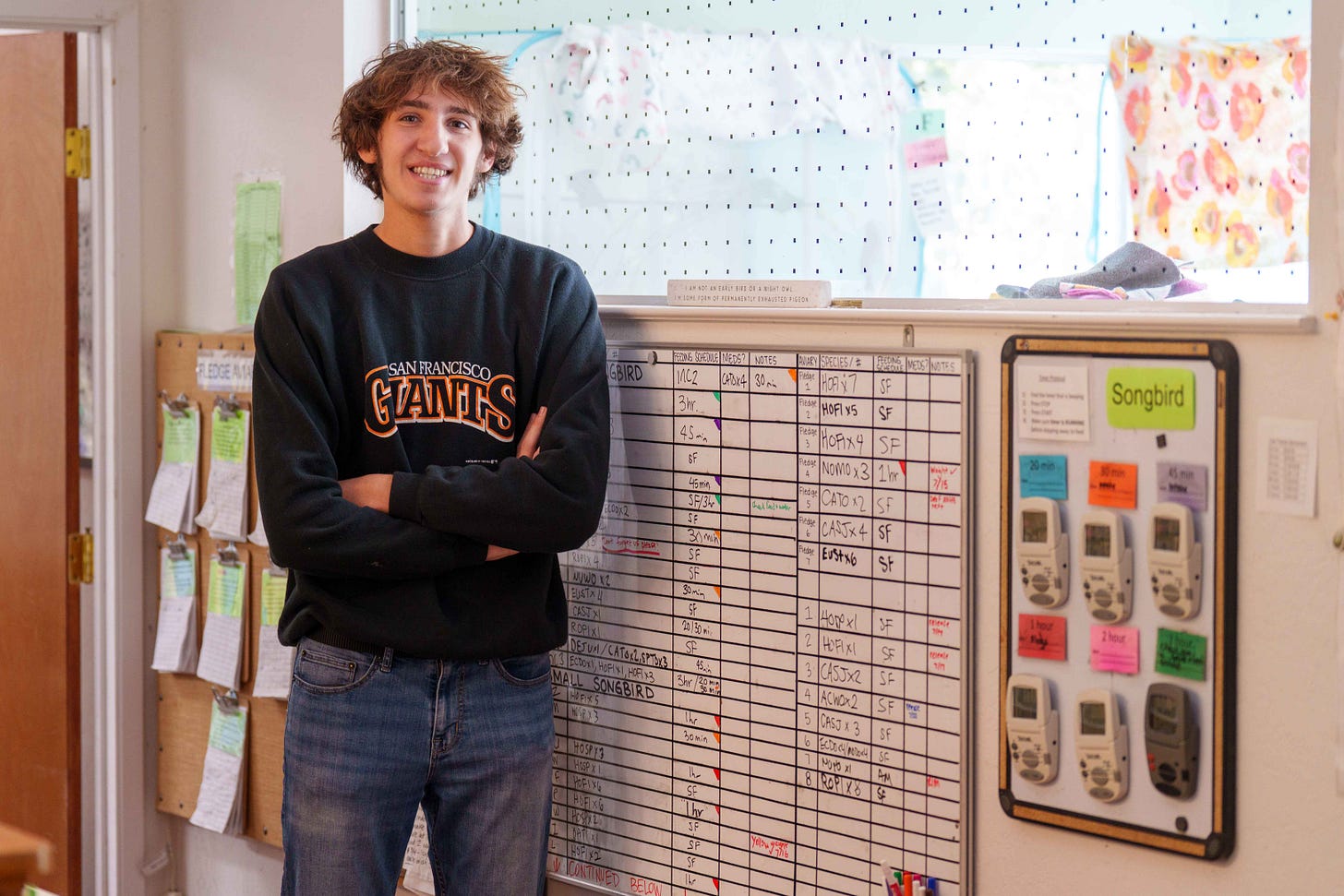
“I’ve always loved animals,” Wiesner said. “But I didn’t realize how much thought went into this — it’s not just feeding, it’s observation, temperature, portioning. Everything matters.”
He hopes to become a veterinarian. For now, he’s focused on the small things: working quietly, following the protocols and learning from people like Taylor.
The food he prepares comes from local donations and a modest $70,000 annual food-operating budget.
“This is one of the most important jobs,” said Poole, watching from the doorway. “And Hayden’s a quick study. We’re lucky to have both the wisdom of experience and the energy of what’s next.”
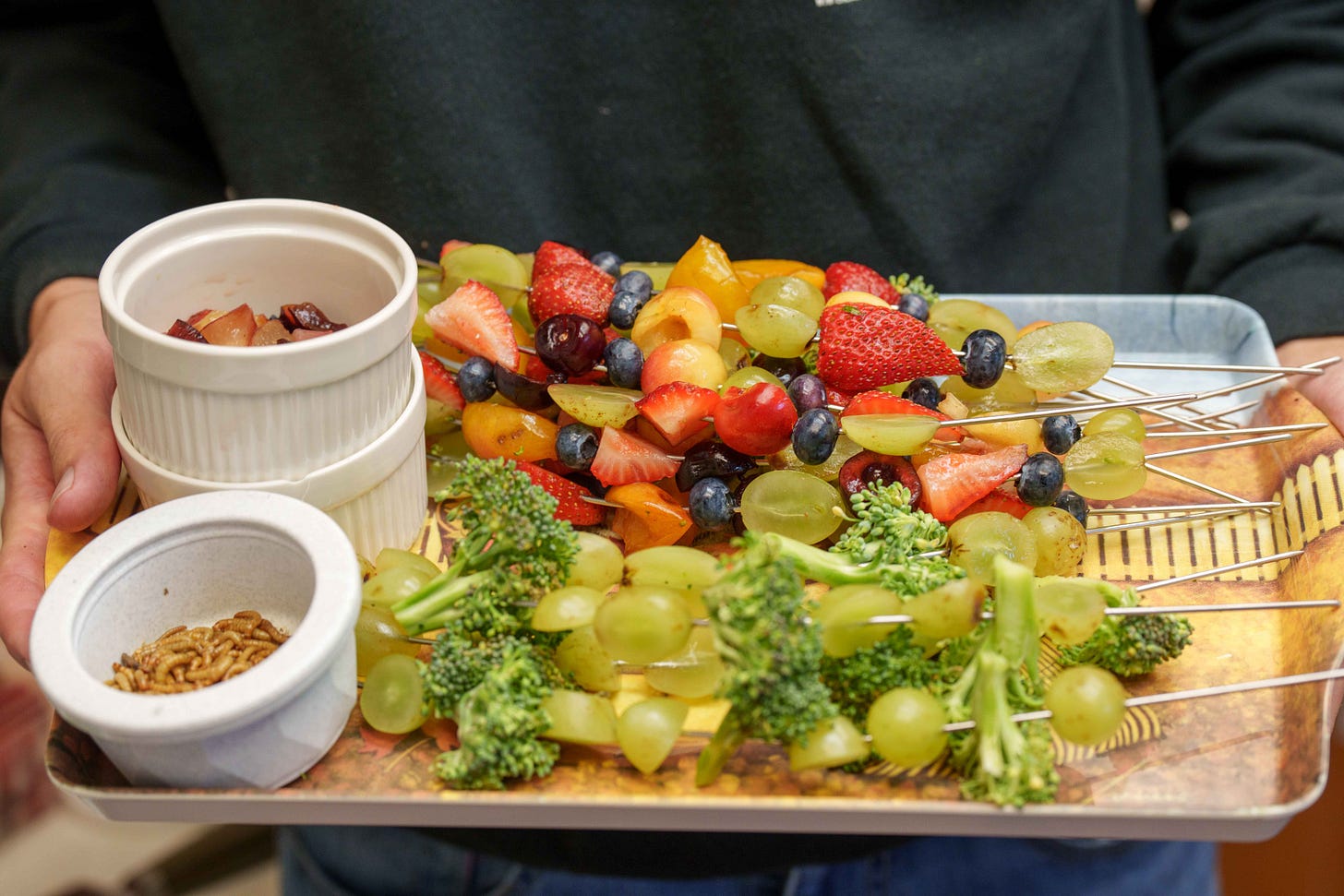
Beyond the Box: A Facility Built for Recovery — and Ready to Grow
Located in the Carneros region of Napa and surrounded by vineyards and marshlands, Napa Wildlife Rescue appears modest at first — a series of low buildings set among native plants, shaded enclosures and carefully constructed aviaries. But inside the operation runs with the quiet precision of a small hospital.
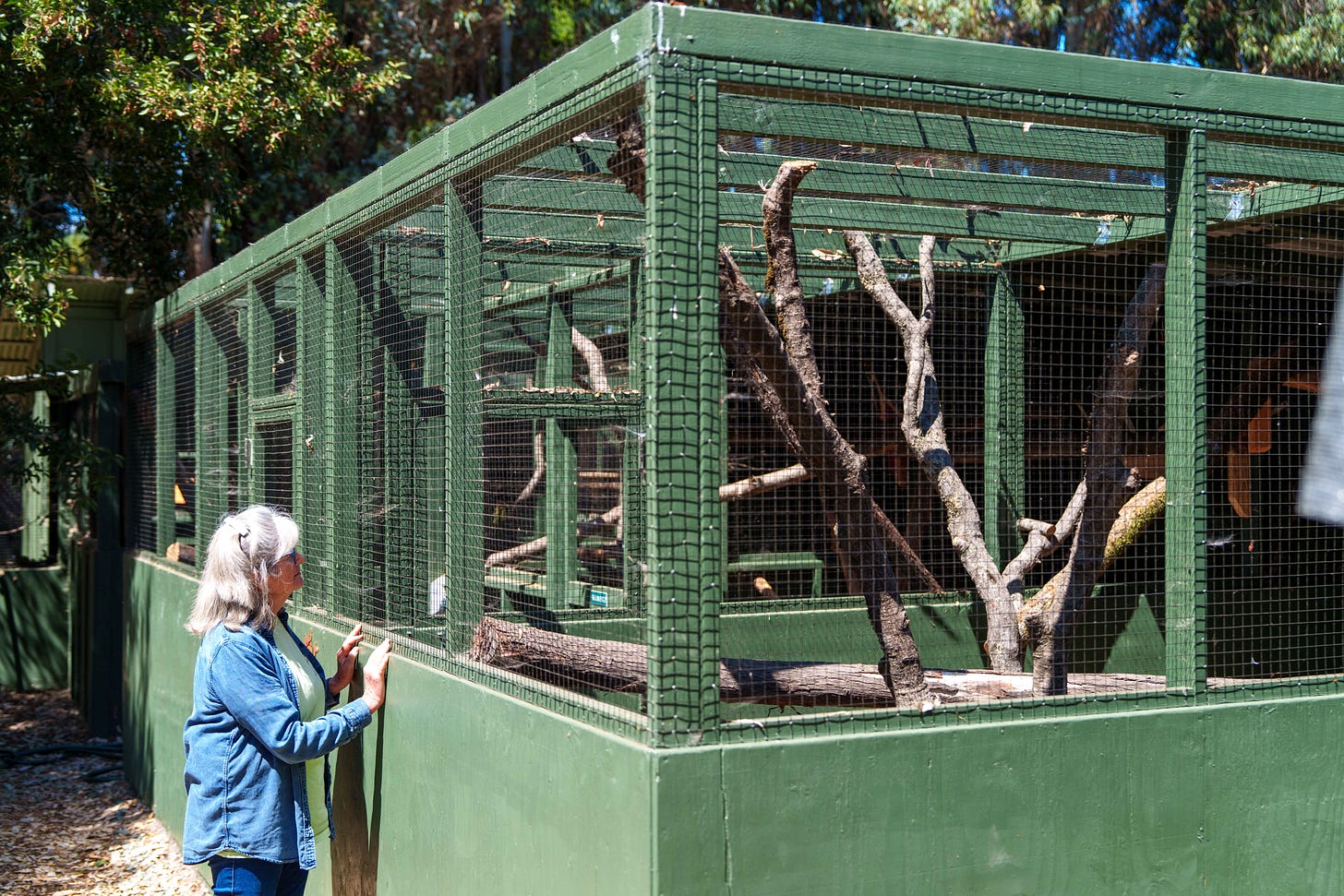
A dedicated intake room contains heat lamps and species-specific holding crates. A clinical exam area houses radiology equipment, surgical tools and medical supplies — all efficiently arranged in compact spaces. Outside, animals recover in mesh raptor pens, open-air songbird aviaries, and mammal habitats built to reduce stress and human interaction. Every space is designed with healing in mind.
On a warm summer afternoon, the calls of birds filled the air. A family of raccoons napped in a shaded enclosure. Inside, volunteers updated feeding charts, medication logs and release timelines. Timers chirped at regular intervals. Each animal was on a path — the goal always the same: recovery and release, not captivity.
But space is running out.
The center has already admitted more than 1,300 animals this year — with hundreds still on-site. Demand shows no sign of slowing. According to Poole, the reasons for the increase aren’t entirely clear, but likely contributors include unusually heavy early-season rains, the closure of a nearby county’s rescue center and growing public awareness of Napa Wildlife Rescue’s work.
That’s where Michelle Clancy hopes to help. As the organization’s newly appointed annual funds and grants manager, Clancy is helping chart a path forward.
“We need more room,” she said. “We’re doing more with less, and it’s working — for now. But if we’re going to keep pace with the need, we have to expand.”
That means more enclosures. Upgraded medical infrastructure. And, perhaps just as critically, sustainable funding for staff, training and equipment. With a background in nonprofit development, Clancy approaches the challenge with realism — and urgency.
“There’s no shortage of compassion and energy here,” she said. “The staff and volunteers work long hours. The community has been incredibly generous. But the demand keeps growing. It’s not just a good cause — it’s essential.”
Each intake, each release, each saved life adds to the case for growth. What happens next may depend less on the animals and more on the humans willing to step up.
A Quiet Mission, Continued
Back inside, Poole moved between enclosures with practiced ease — checking charts, observing behavior, adjusting a heat lamp. After more than 12 years at Napa Wildlife Rescue, she has seen hundreds of species come and go. But the work, she said, never gets routine.
“No day is the same,” she said. “The animals keep coming — and we do what needs to be done.”
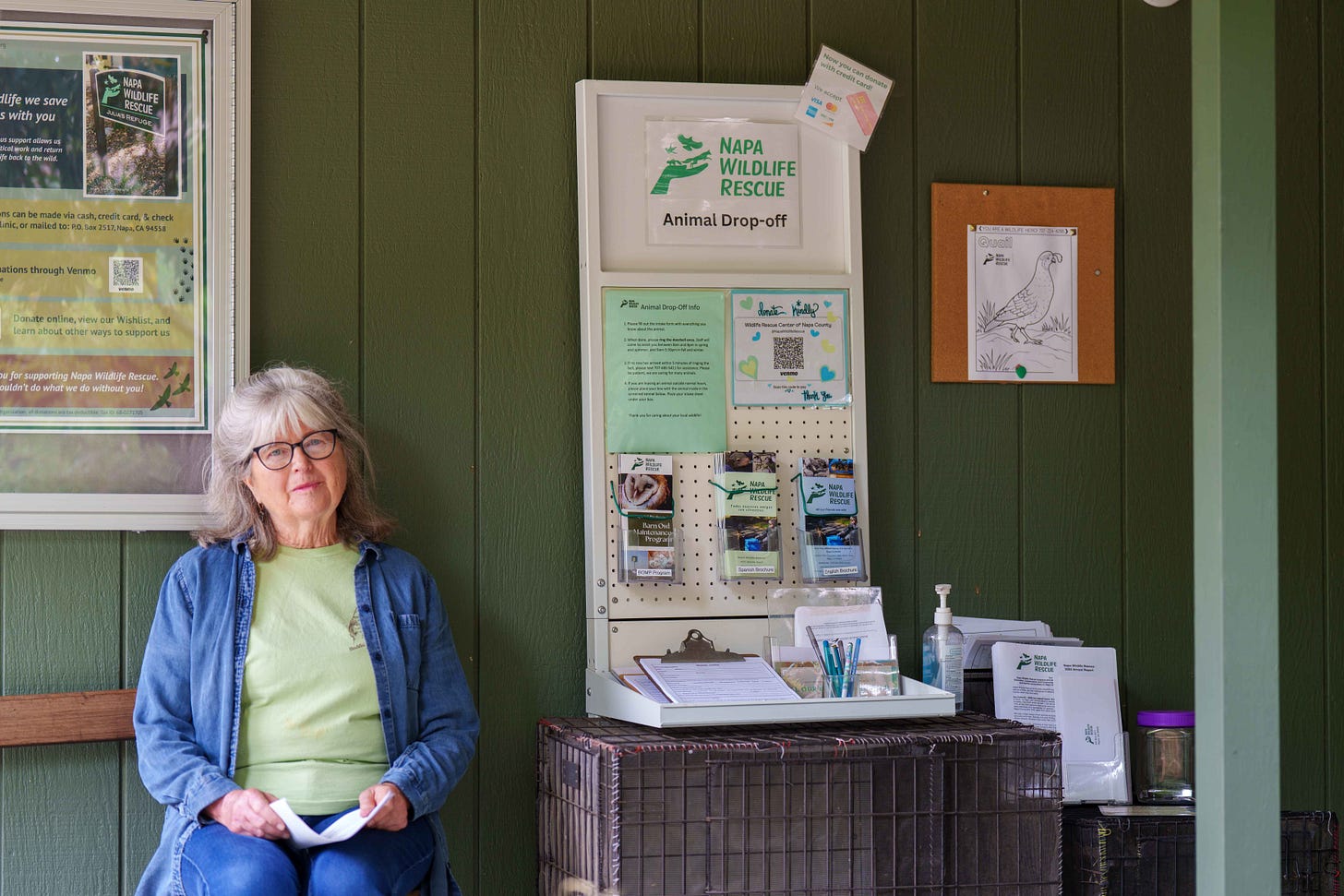
Poole oversees administrative operations and personally cares for the raptors in rehabilitation, including Maddie, the red-tailed hawk who serves as the center’s animal ambassador. Furlong, as director of animal care and operations, is responsible for all decisions related to food, medical treatment, staff scheduling and volunteer training. Together, Poole and Furlong collaborate on personnel decisions and work jointly to prioritize facility improvements. Furlong also works closely with state and federal regulators to ensure compliance and with local officials when wildlife conflicts arise. But most days her attention stays on the animals — the work of caring, observing and getting each one ready to return to the wild.
That moment — when a hawk lifts into the sky or a fox slips back into the brush — is the goal. But it takes time. And people. And trust in the process.
Poole said she is deeply grateful to live and work in a community that values this mission.
“Napa has been incredibly supportive,” she said. “From volunteers and donors to the people who bring animals through our door — it’s a constant reminder that we’re not doing this alone.”
Outside, another timer went off. Inside, a volunteer logged feeding data. In the next room, a fawn shifted in its bedding. The work continued — quiet, precise and entirely necessary.
—
Tim Carl is a Napa Valley-based photojournalist.
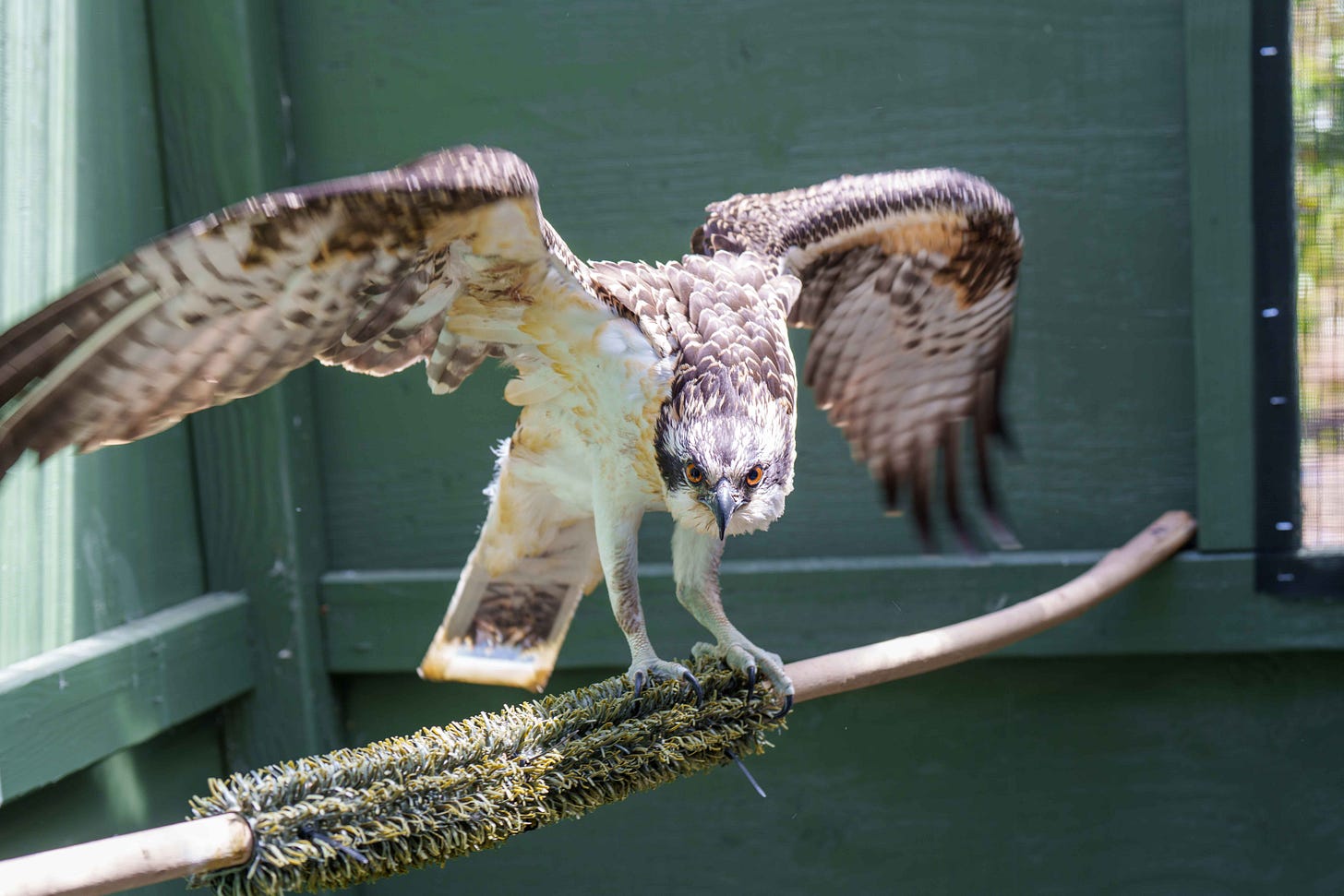
Today’s Polls:
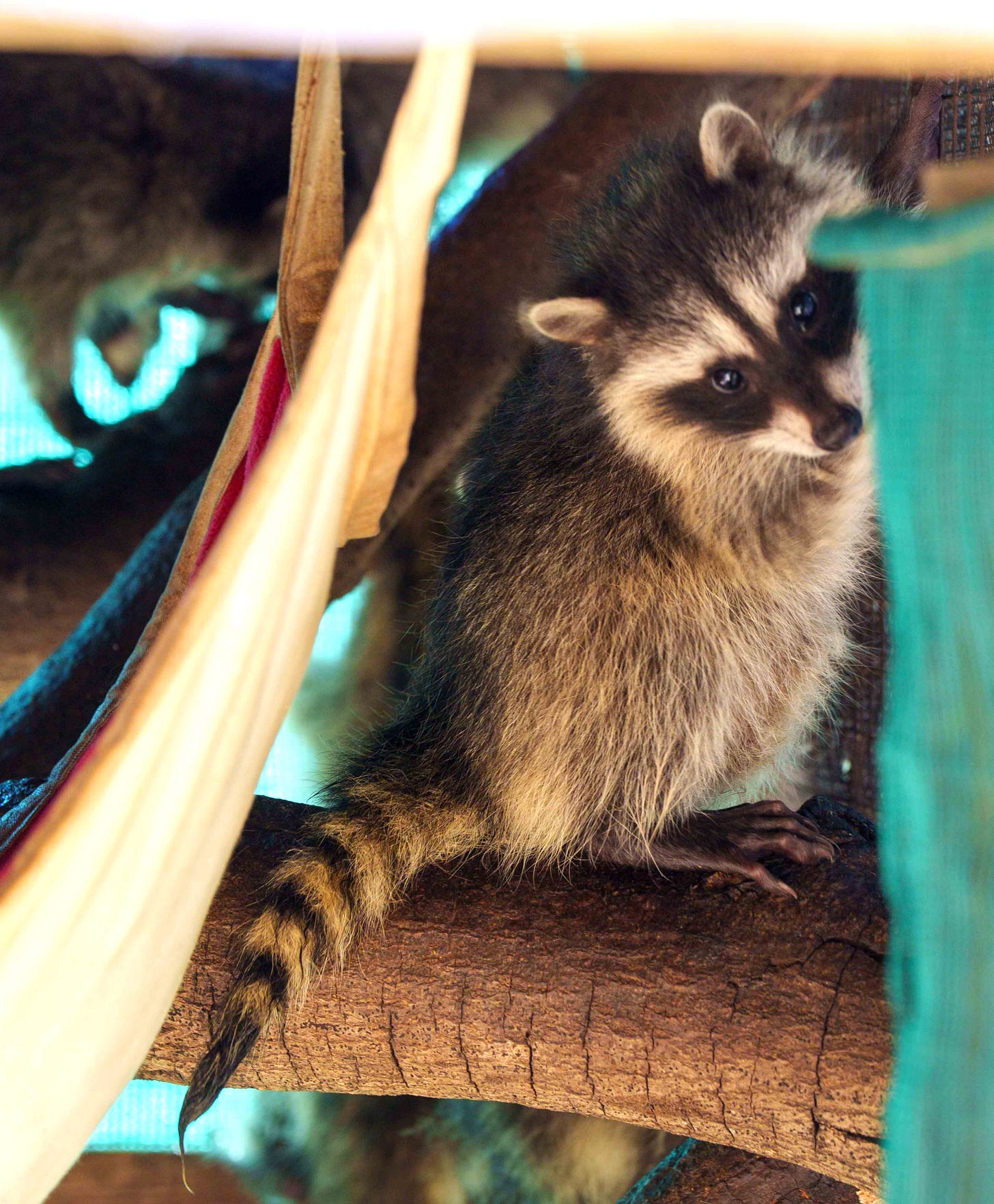
Poem of the Day
Iris of Life
By Zitkála-Šá
Like tiny drops of crystal rain,
In every life the moments fall,
To wear away with silent beat,
The shell of selfishness o’er all.
And every act, not one too small,
That leaps from out the heart’s pure glow,
Like ray of gold sends forth a light,
While moments into seasons flow.
Athwart the dome, Eternity,
To Iris grown resplendent, fly
Bright gleams from every noble deed,
Till colors with each other vie.
’Tis glimpses of this grand rainbow,
Where moments with good deeds unite,
That gladden many weary hearts,
Inspiring them to seek more Light.
About the author: Zitkála-Šá (1876–1938), also known as Gertrude Simmons Bonnin, was a Yankton Dakota writer, musician and political activist. Born on the Yankton Indian Reservation in what is now South Dakota, she was sent to a Quaker-run boarding school at age 8, an experience that sparked a lifelong struggle between her Indigenous identity and the pressures of assimilation. She later became a leading voice for Native American civil rights, co-founding the National Council of American Indians in 1926.
Her literary work, which includes essays, short fiction, poetry and music, blends Native oral traditions with Western literary forms. “Iris of Life,” first published in “The Earlhamite” in 1898, reflects her early poetic style — idealistic, lyrical and morally reflective — while hinting at her deeper philosophical and political commitments. Zitkála-Šá also collaborated with composer William F. Hanson on “The Sun Dance Opera,” integrating Indigenous themes into Western art forms. Her work has gained renewed recognition for its formal innovation and for advancing Indigenous perspectives in American literature.
Are you a poet, or do you have a favorite piece of verse you'd like to share? Napa Valley Features invites you to submit your poems for consideration in this series. Email your submissions to napavalleyfeatures@gmail.com with the subject line: "Poem of the Day Submission." Selected poets will receive a one-year paid subscription to Napa Valley Features (a $60 value). We can’t wait to hear from you.
Today’s Caption Contest
Pick your favorite caption or add your own in the comments below.
Possible Captions:
“Day 47: morale remains cautiously optimistic.”
“Estimated arrival? Unknown. Commitment? Unwavering.”
“Momentum is a state of mind.”
“The silence is part of the design.”
“The manual was edible, so they ate it.”
Last week’s contest results
In “Jacques Pépin Marks 90th Birthday With Napa Valley Celebrations,” the winning caption was “Technique is the illusion of effortlessness,” with 28% of the votes.
“The wise accepts one’s mise en place.”
“At the summit of taste, there are no shortcuts.”
“Few reach the top. Even fewer bring a towel.”
“The summit is only prep.”
“Technique is the illusion of effortlessness.”
Last Week
Tim Carl reported on shifting travel patterns in “Under the Hood: International Air Travel Is Slumping — and Napa Isn’t Immune.” Despite optimistic forecasts, 2025 has seen a drop in international visitors to the United States, with arrivals from Asia and Europe falling sharply. Airline route cuts, immigration policy changes and new travel warnings from allied nations have contributed to the decline. Locally, the closure of Avelo’s base at Santa Rosa Airport and rising luxury hotel revenue in Napa contrast with declining spending at tasting rooms and small businesses. The piece highlighted how changes in air access and travel behavior are reshaping the region’s tourism economy.
Sasha Paulsen reported in “Jacques Pépin to Visit Napa Valley for His 90th Birthday Celebrations” that the legendary French chef is marking his milestone year with a series of events to support the Jacques Pépin Foundation. The nonprofit, co-founded with his daughter Claudine, aids culinary training programs for underserved communities. Pépin’s Napa Valley itinerary includes a high-end dinner at TORC, a picnic-style gathering at CIA at Copia with renowned Bay Area chefs, a public conversation and cake-tasting, a culinary and art event at The MAC and Under-Study, and a finale dinner at The French Laundry. The “90/90” celebration spans the country with 90 dinners featuring 90 chefs. Pépin, a former personal chef to French presidents and longtime TV collaborator of Julia Child, turned to teaching and writing after a 1974 car crash reshaped his career.
Dan Berger continued his analysis of industry struggles in “Wine Chronicles: Industry Contraction, Consumer Opportunity,” outlining why even once-allocated wines are sitting unsold. He cited oversupply, shifting consumer habits and a drop in Gen Z wine spending as key factors. As a result, many wineries are discounting or closing, while some distributors are exiting key markets such as California. Berger noted that this downturn may benefit consumers through lower prices and better quality, particularly for wines that improve with bottle age. However, he warned that not all varietals age well and urged buyers to proceed with care.
Rayna Jeremias shared a personal account of moving and replanting in “The Magic of (Re-)Growing a Garden.” After relocating to a neglected property in Napa, Jeremias cleared overgrowth and attempted to transplant long-cherished plants — often under less-than-ideal conditions. Despite skipping best practices due to time constraints, many of her plants, including a Japanese maple and a tea rose, eventually recovered and flourished. She also discovered fruit trees and a sprouting mimosa, reinforcing lessons about resilience, patience and the unexpected gifts of gardening. The piece also included information on upcoming UC Master Gardener workshops and events.
Kathleen Scavone examined the ecological and cultural importance of the Putah Creek Watershed in “Putah Creek Watershed Flows Through Our Lives.” The article detailed the creek’s 81-mile course from Lake County’s Mayacamas Mountains through Lake Berryessa and into Yolo and Solano counties, highlighting its diverse ecosystems and native plant and animal species. Scavone also described the watershed’s history, including its Indigenous names and evolution through early California maps and missions. Ongoing efforts by the Putah Creek Council and UC Davis researchers to monitor and protect the area’s biodiversity were also explored. The piece underscored the watershed’s role as both a vital ecological corridor and a community resource for recreation and conservation.
—


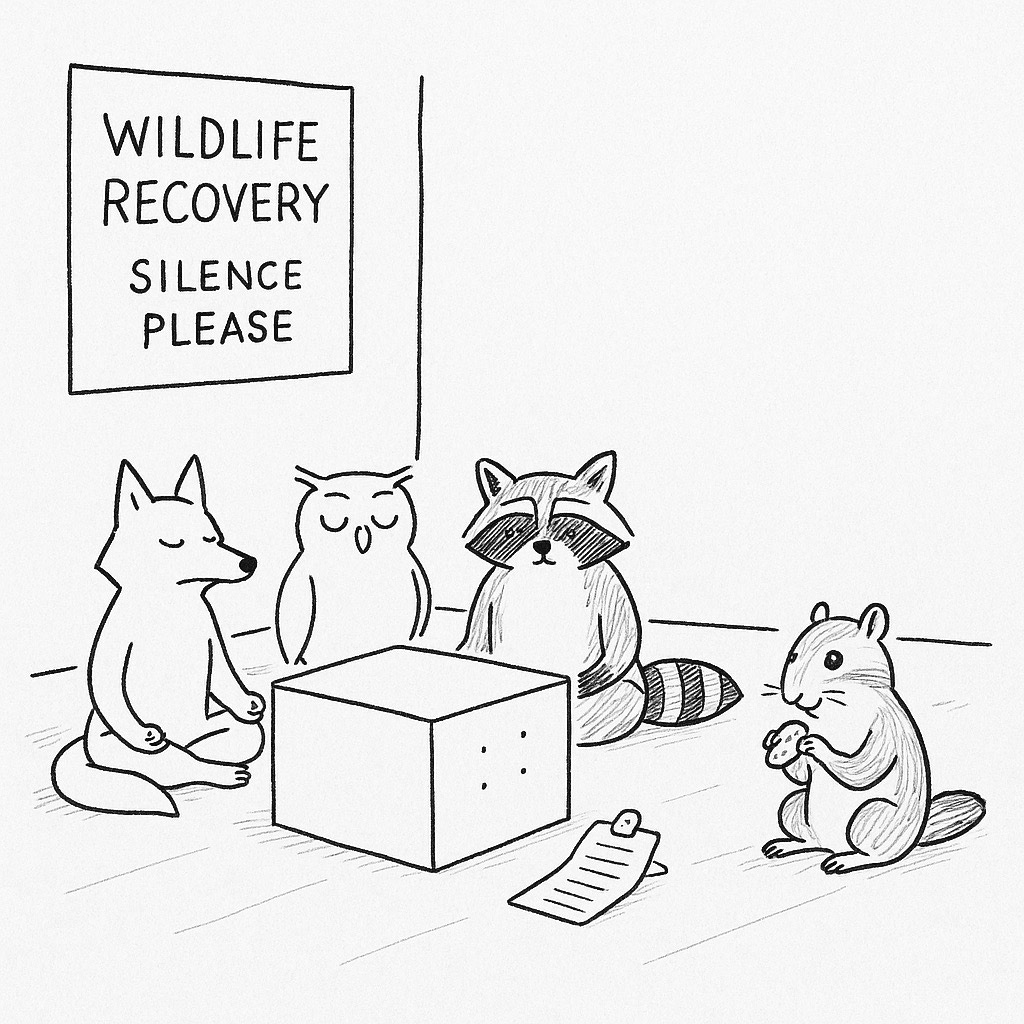

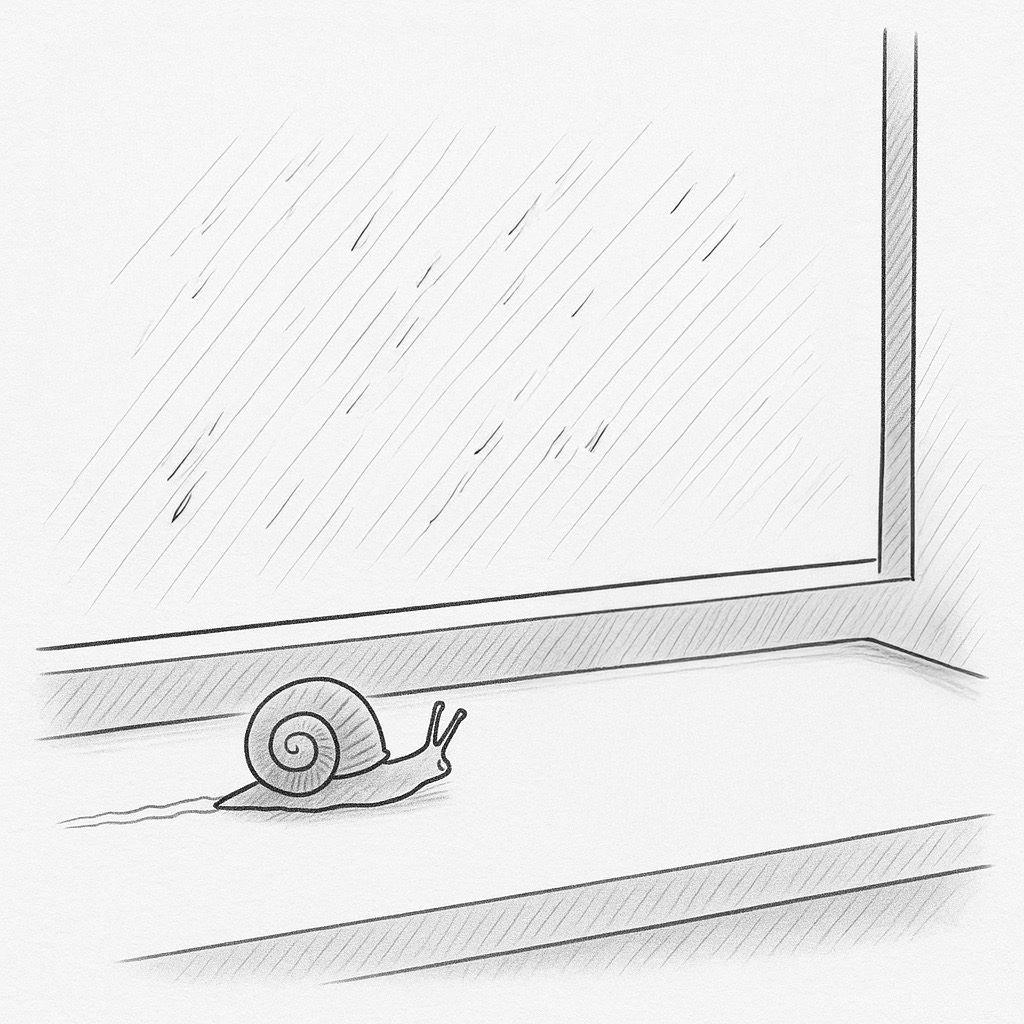
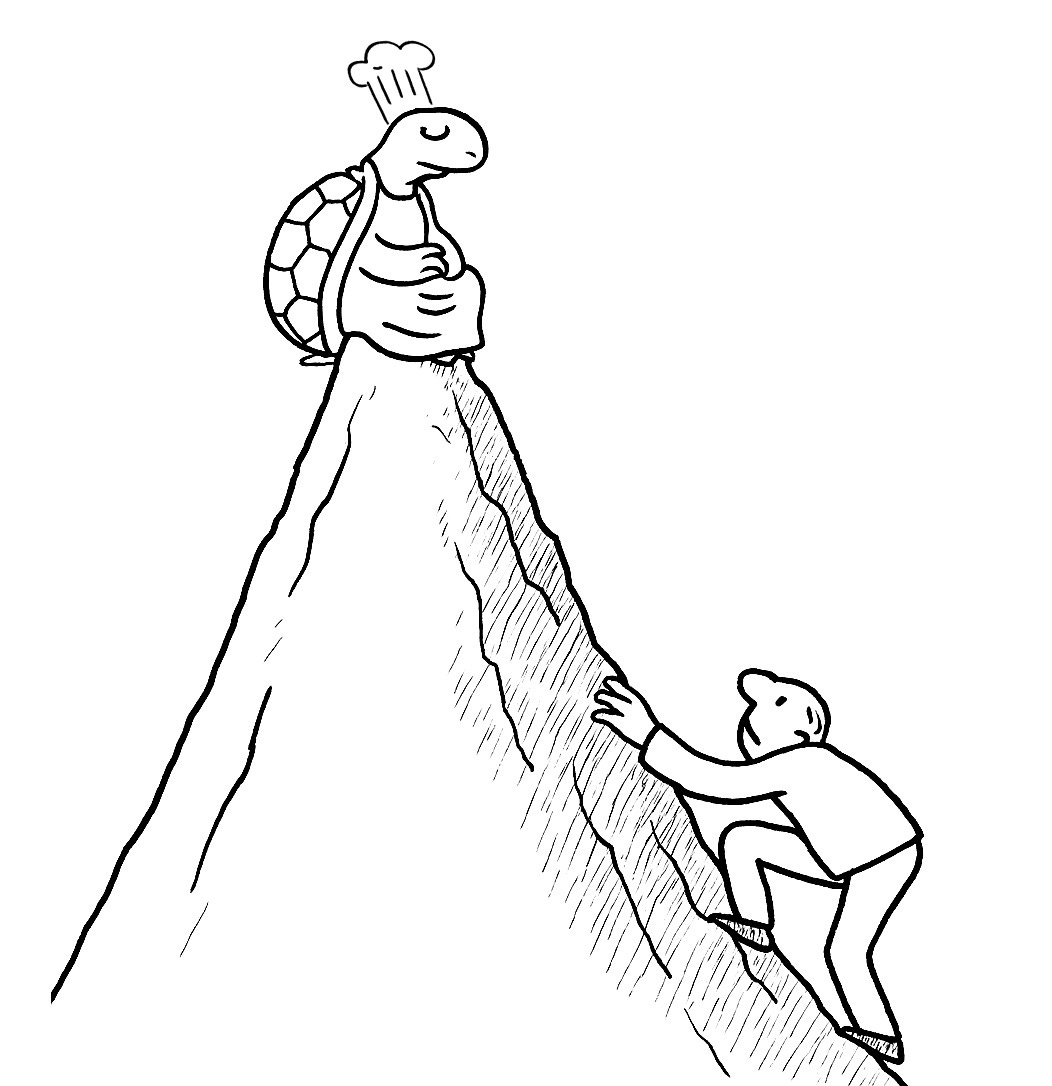
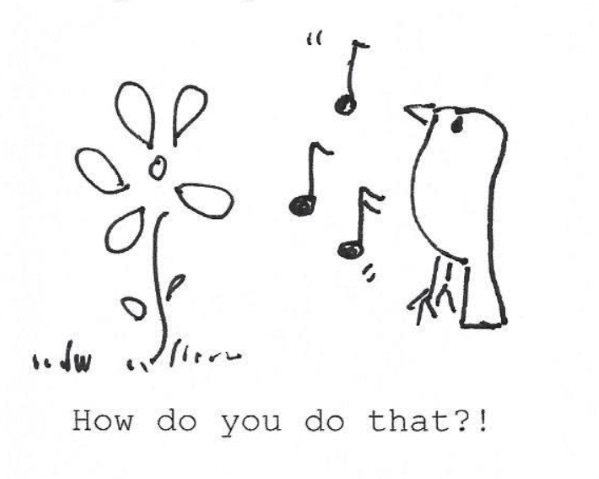












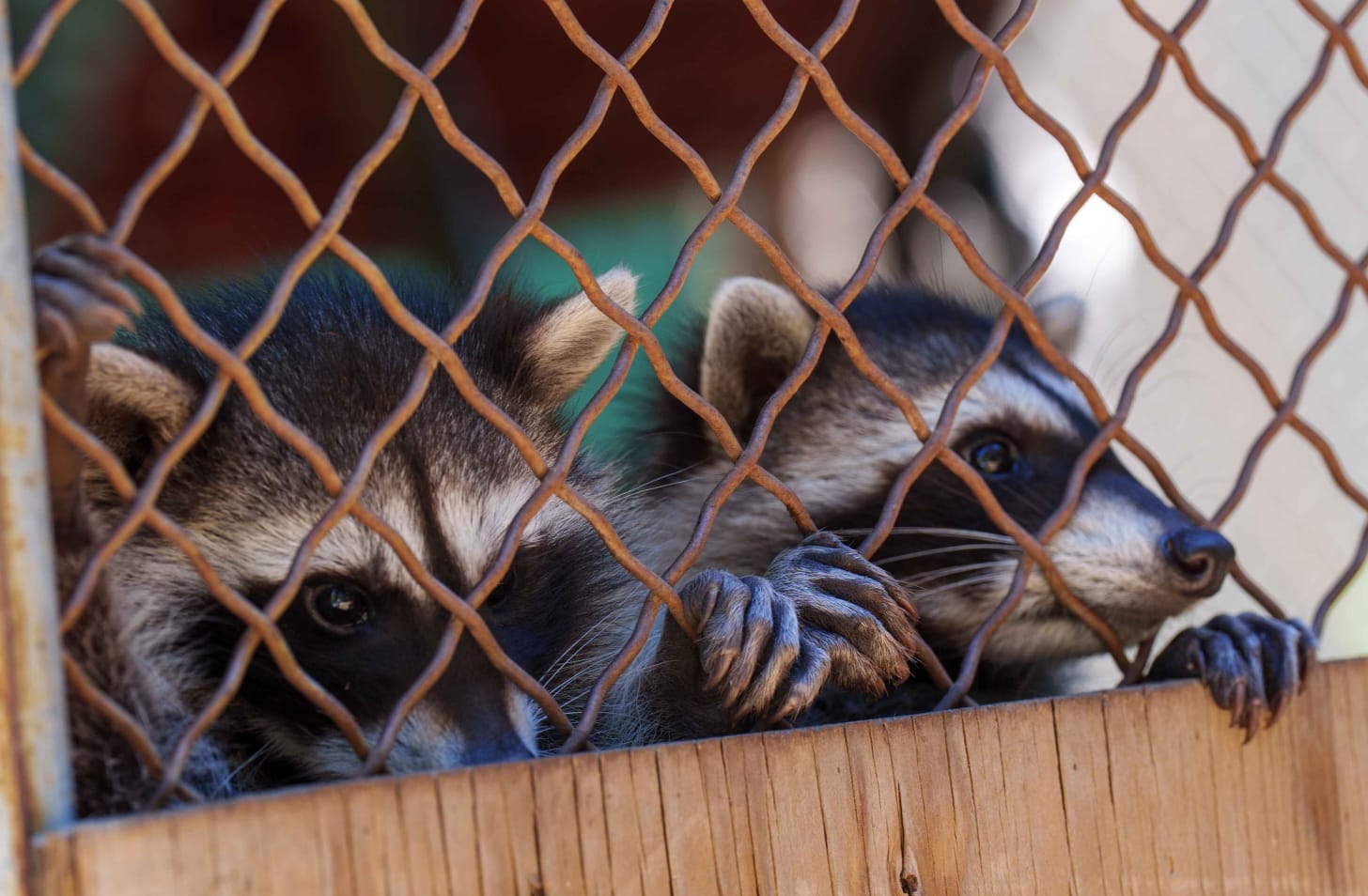
Nice article Tim. Well done. They are a great organization. I volunteered years ago when they were in Yountville. And am so happy to have them here in the hood in Carneros. As a long term resident here I am pleased to have them in the hood. They do great work.
Well-deserved publicity for a vital organization. Well done!